Introducing Our Pro Series MCU Proto Board with DC Input

We have begun introducing our new series of solder prototype boards for those looking to build permanent projects.
While solderless breadboards are ideal for building temporary circuits, there comes a time in some projects where it is desirable to build a version that can be put into permanent use.
The most common option is to use standard 0.1” solder type perf board. While it is the least expensive approach, it generally gives unsatisfactory results for all but the simplest of circuits and the end result is almost guaranteed to be cosmetically challenged. There are also slightly better approaches that more or less duplicate the solderless breadboard in copper which have some of the same limitations as the solderless breadboard or which are designed to mount only a specific MCU.
We think there is a better approach and the first product in our new Pro Series line of proto boards is the MCU Proto Board with DC Input.
Our goal is to provide a high quality, easy to use board with a flexible architecture that works with virtually any DIP style MCU and that allows you to create a finished circuit that both functions well and which you will be proud to show off.
This 4” x 4” board utilizes high quality double-sided construction with ENIG (Electroless Nickel Immersion Gold) finish for maximum performance and good looks.
The center proto area is extra wide with a 6-hole pattern to accept virtually any DIP style microcontroller module such as the Arduino Nano and Micro, the full Teensy product line, ESP8266 NodeMCU, D1 Mini and ESP32 style development boards. It will also work with any DIP package microcontroller ICs such as the ATTiny85 and ATmega328.
Standard 0.3” wide 3-hole proto sections on either side provide mounting for standard DIP ICs, discrete components, modules of various types and SMD to DIP adapter boards.
Standard 0.1” header and offset connector footprints with separate solder points are provided along the back edge for easy I/O connections.
A flexible DC power input section provides multiple options for powering the board from an AC adapter or battery. The power and ground rail fully covers the board and can be powered from the DC input or from the MCU on-board regulator or from a separate power circuit built on the board by the user. The large 40mil hole / 70mil pad pattern accepts even large TO-220 leads.
The board is available as board only or optionally with a kit of components to fully populate the DC power input section of the board. Check out the product page for more product details
— Ken

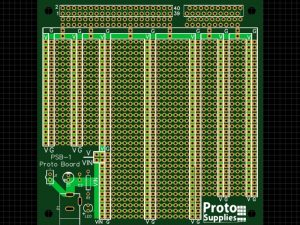
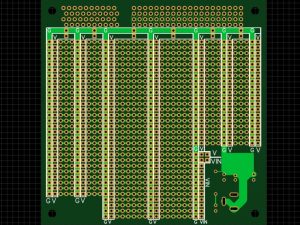
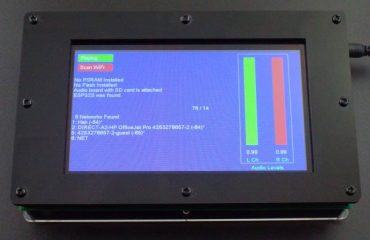
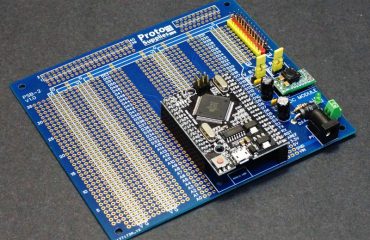
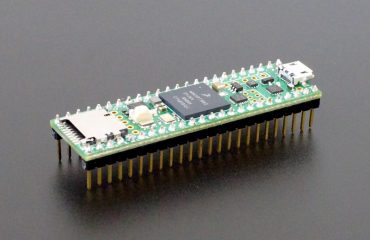
You must be logged in to post a comment.